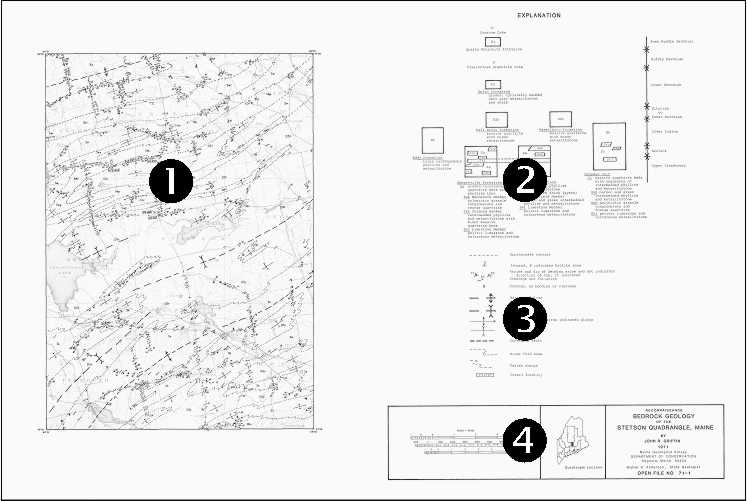DACF Home → Bureaus & Programs → Maine Geological Survey → Using Geologic Maps → Bedrock Geology Maps → Reconnaissance Bedrock Geology Maps
Reconnaissance Bedrock Geology Maps
Typical format of information shown on Reconnaissance Bedrock Geology Maps:
Although there may be variable amounts of detail and types of geologic features shown on different bedrock maps, the basic elements are the same from map to map. This black-and-white map shows an example of a reconnaissance 15' quadrangle map (1:62,500 scale) published before 1996. Numbers indicate portions of the map explained below.

| 1 | Geologic map - Displays all the bedrock geologic information, including observed bedrock locations and individual data points, as well as the interpreted distribution of rock units and the nature of their contacts. Each rock unit is identified by a letter symbol that corresponds to its description in the Explanation of Units (part 2 below). |
| 2 | Explanation of units - Identifies the rock unit on the map by letter symbol, and gives brief rock descriptions. Units are arranged by age, with youngest at the top and oldest at the bottom. |
| 3 | Explanation of symbols - Describes the observed bedrock characteristics that are represented on the map by various symbols. |
| 4 | Title block - Gives the name of the U.S.G.S. quadrangle, the name of the geologist(s) who compiled and interpreted the map, the date of publication, and map scale. |
Last updated on April 25, 2012